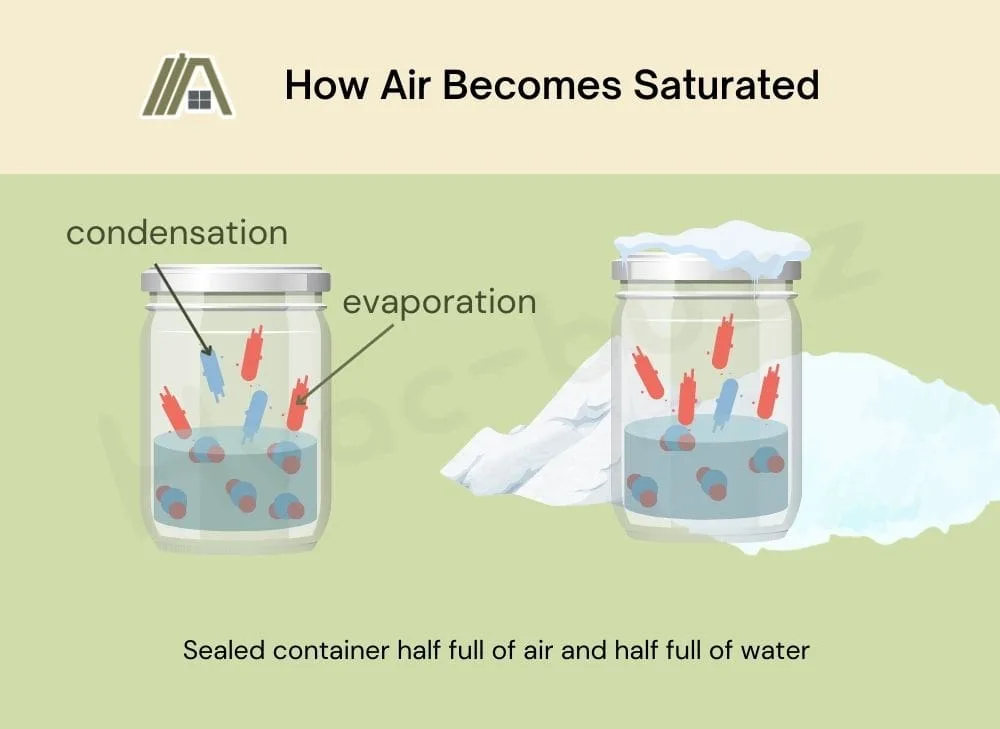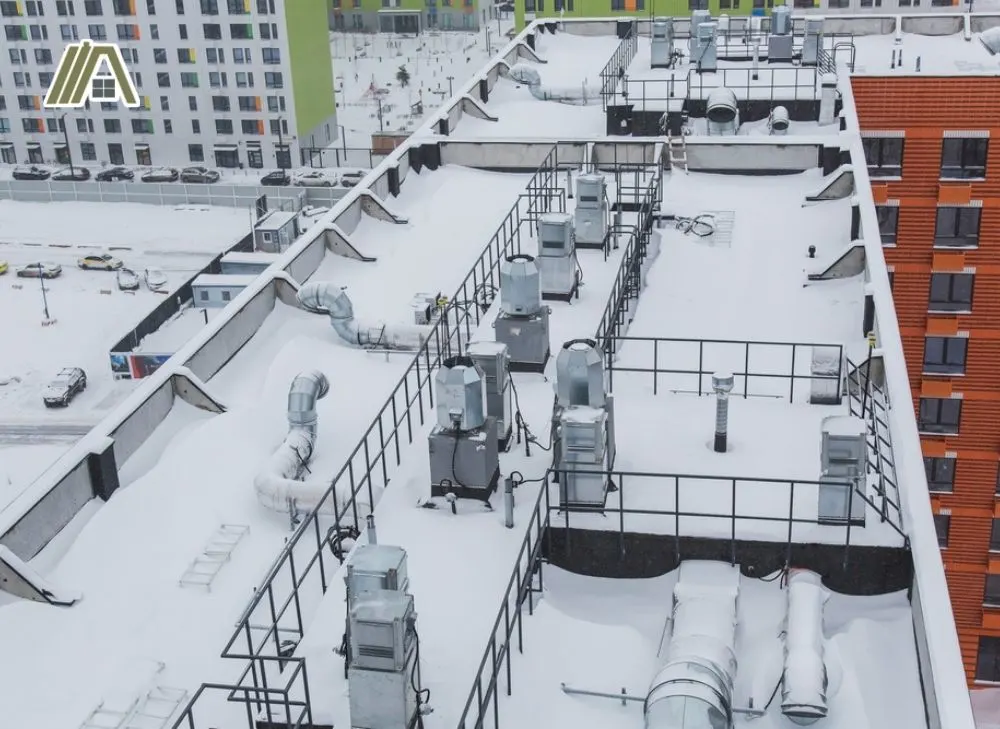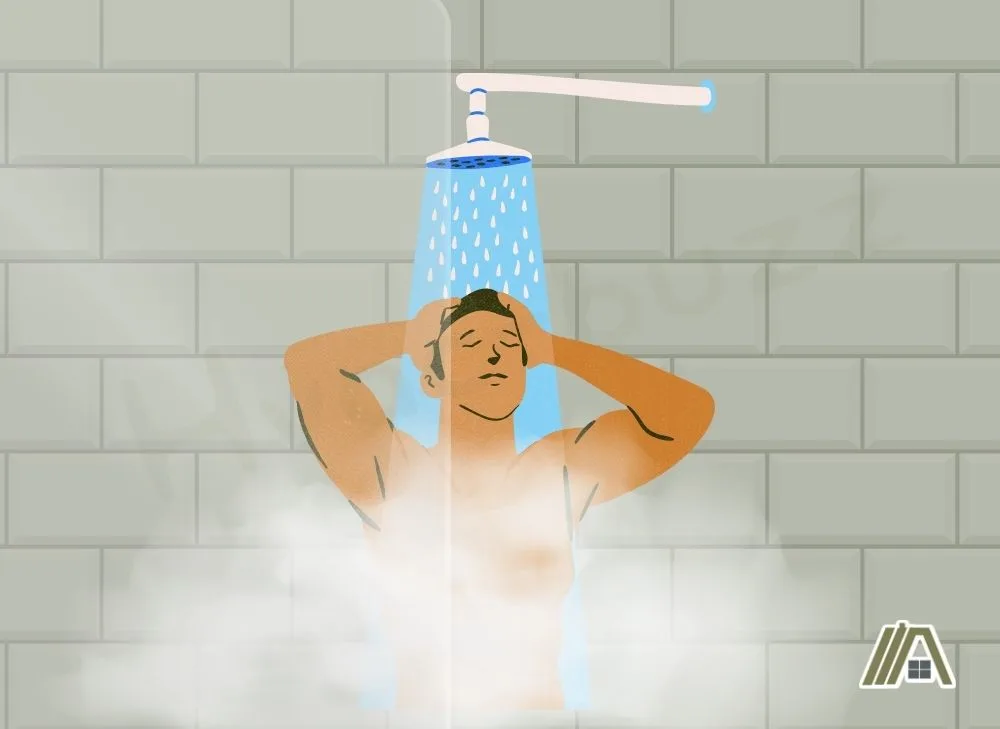Normally, a bathroom is supposed to vent moisture out, not bring it into your home! So, it can be concerning when you notice a drip from your bathroom fan vent.
Thankfully, if you’re noticing this drip only in cold weather, that narrows down your potential causes significantly. While this is not an uncommon problem to have, it isn’t a good one since water damage can be harmful to you, your home, and your wallet! I’ve put this article together to help you get an idea of what the issue with your vents is and how to fix it.

In winter, heat from the exhausted air is lost to the air surrounding ducts if they are uninsulated. Water condenses out and drips from the fan vent. Snow can also enter the ducts, melt, and run out of the fan vent. Hotter showers in winter can cause dripping if there is a problem with the ductwork or fan.
Uninsulated Ducts Cause Dripping in Cold Weather
Condensation Occurs
The main purpose of bathroom ducts is to remove moist, steamy air from your bathroom (and your home—bathroom fans must vent to the outdoors).
When the weather is cold, the air traveling through the ducts is much warmer than the air surrounding the ducts. If there is no insulation or poor insulation, then the heat can easily transfer to the ducts and the external air. This causes moisture to condense (the next section handles why).
The condensation travels through the ducts and drips out of the bathroom vent. This is more pronounced if there is an incline near the fan’s indoor vent.
It is even possible for ice to form on the inner surfaces of your bathroom fan ducts if the weather is extreme and the ducts are not insulated. Subsequent melting of this ice will also cause dripping.
Why Condensation Occurs
As we have established, condensation occurring in your ducts is the result of temperature interactions and changes.
When hot, moisture-laden air removed from the bathroom encounters ducts that have been chilled by the cold external air, then heat from the exhausted air is transferred to the ducts and then to the air outside the ducts.
Heat is always going to passively move from a place of higher temperature to a place of lower temperature. We say that it moves down the temperature gradient. The greater the gradient, the more heat will be transferred to reach the point where the temperatures in the two areas are equal.
So, what happens when the air in the ducts cools down? Well, nothing really happens until the air reaches drops below its dew point. The dew point is the temperature at which the air reaches saturation.
Air can reach saturation without cooling down if you keep adding water vapor to it. After that point, no more water can enter the air, and any more you try to add will simply condense into liquid water.
When you cool air, you change its saturation point. This is because cold air holds less moisture.

Air temperature is a reflection of how fast the molecules are moving. When they move fast, they cause the air to expand, and the spaces between the molecules are larger. Water vapor can fill these spaces.
When the air is colder, the molecules move slower, and the air contracts. There is now less space to hold water vapor. When the dew point is reached, the air is saturated. When the temperature drops below the dew point, the water starts to condense out.
Obviously, when the weather is colder, the temperature gradient between the air in the ducts and the air out the ducts is going to be greater and more heat will be transferred out of the duct. The greater the loss of heat, the lower the air’s saturation point, and the more water condenses out.
This is why you would more likely notice your fan dripping in cold weather even though nothing changes in the system between the cooler and warmer months.
Solution
The best solution to poor insulation is, of course, to have proper insulation installed. You want something around your ducts so that they will not chill as easily in cold weather.
While adding insulation to your ducts may be enough to stop or minimize the dripping, it could also be beneficial to invest in backdraft dampers.
Backdraft dampers help to prevent cold air from making its way into your home’s ducting from the outdoors. The heat from the bathroom air moves down the temperature gradient to heat the cold outdoor air and water condenses out.
So, even if your ducts are well insulated, cold air could be blowing into them, so a damper is a good option to prevent this.
Snow Is Getting Into the Ducts
If your ducts are well-insulated but you’re still having a drip issue, you may want to consider if snow could be making its way into your ducts.

If you believe this could be a possibility, you’ll want to have a thorough inspection done on various parts of your ductwork.
Be sure to check the roof vent and roof hood to ensure there are no cracks or leaks (remember to check the flashing too). It could also be that even if there are no defects, the shape or placement of the parts is not effective at keeping the snow out.
It should also be noted that even if you have a backdraft damper installed, it will not keep the snow or water out. A damper’s primary purpose is to keep the air flowing in one direction, but it will not prevent melting snow from dripping down your vent.
Additionally, even if snow is piling up on or around your vent rather than blowing inside, water may still be finding its way in as the snow melts. This melting can be exacerbated by the warm air being vented out of your bathroom.
Solution
There are a few options here. The first is to install a snow blocker or snow diverter to prevent snow buildup around your vent. However, this may or may not be effective in incredibly snowy climates, and depending on the structure of your roof.
Another option is to use a vent stack, which should elevate the exit of your vent above any snowfall. However, some people find these unsightly and don’t prefer them.
In such cases, you may instead choose to rework your ducting so that your bathroom vents out of the soffit instead of the roof.
Since your soffit is on the underside of your roof, there is far less risk of snow buildup versus roof vents. Alternatively, you may choose to vent out the wall or gable on a side of your home that sees little driving snow and no snow buildup.
Either way, you should ensure the installation is done properly, as both gable and soffit vents run the risk of backdrafting. This can be minimized by a backdraft damper, however.
Extra-Steamy Showers
Last but not least, your dripping vent could simply be caused by hot showers! In the winter, many people like to take warmer showers than usual as a nice treat in the chilly weather.
However, hotter showers make more steam, and your exhaust system may not be equipped to handle the heavy load. In cold weather, this problem will be worsened and will result in more condensation and, therefore, a more obvious drip.

While this is the least likely cause of your bathroom vent getting the drippy sniffles in cold weather, it’s worth looking into. It could be that the vent is broken somewhere and so it cannot function properly, or your fan may simply not be powerful enough to sufficiently exhaust the air in your bathroom.
Solution
If you think this could be a possibility, the first thing to do is inspect the entirety of your ductwork to ensure that poor ventilation is not being caused by any breaks or malfunctions. If there is anything wrong, you’ll need to have it repaired or replaced.
Once you’re all set in that department, take a look at your fan as well. You’ll want to look up the model if possible and figure out if it is appropriately sized and powerful enough for your bathroom. If it does prove to be underpowered for your bathroom, then it’s best to have a replacement installed.
If you know your fan is about ten years old, you’ll definitely want to have it switched out regardless. Fans don’t last forever, and ten years is about when most fans need to be replaced.
Snow and rain are not clean, so the water dripping into your bathroom from the roof can be brown, which is uglier and more likely to stain your walls.
Sources
https://education.nationalgeographic.org/resource/condensation
https://eldridgeusa.com/blog/louvers-and-backdraft-dampers/
https://hvac-boss.com/faq/water-is-dripping-from-the-bathroom-fan/
https://na.panasonic.com/us/home-and-building-solutions/how-prevent-dripping-vent-fans-cold-weather
https://www.angi.com/articles/your-bathroom-exhaust-fan-leaking-moisture.htm
https://www.finehomebuilding.com/2018/03/01/bath-fan-venting-cold-climates
https://www.houselogic.com/by-room/bathroom-laundry/how-to-install-bathroom-exhaust-fan/

